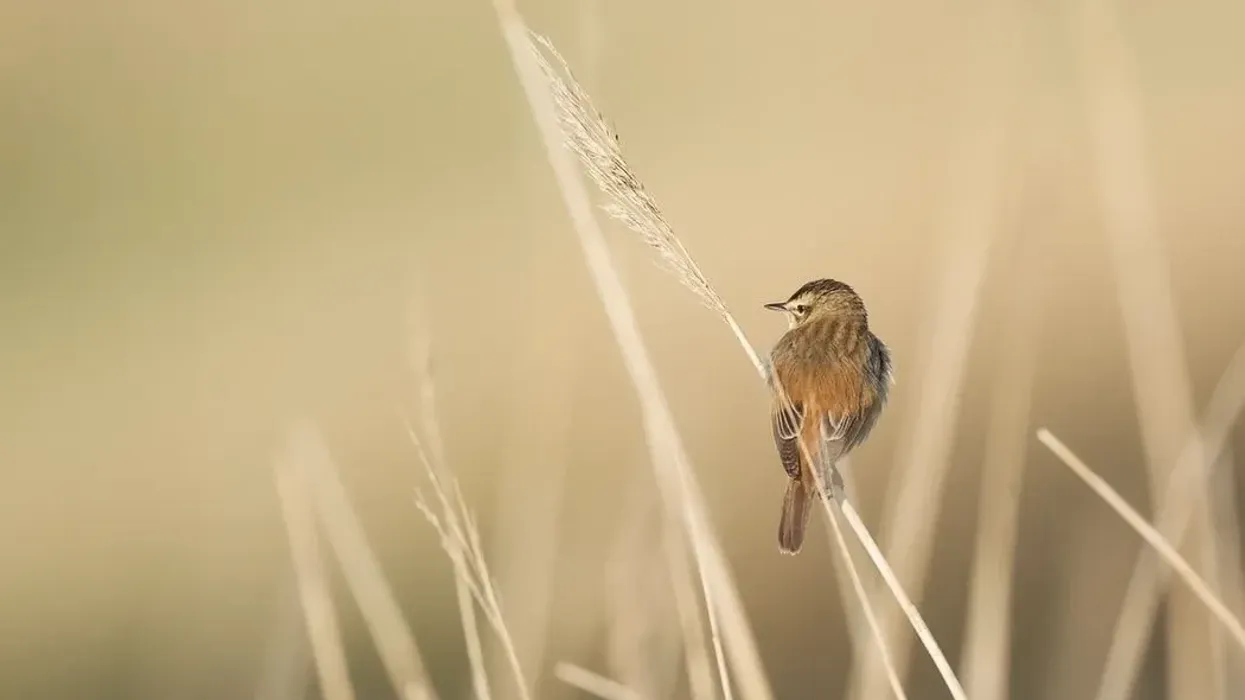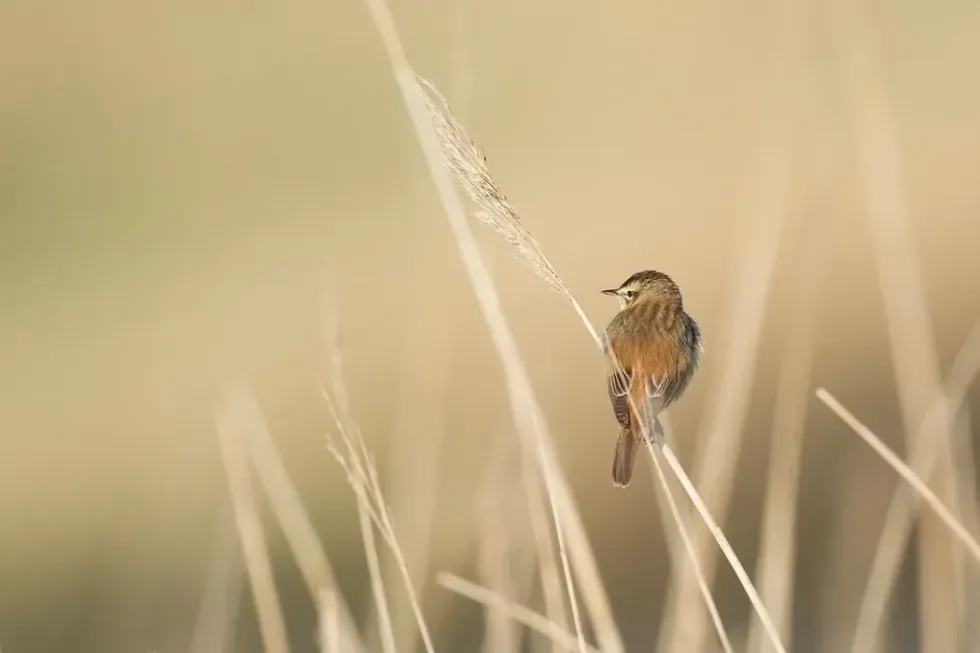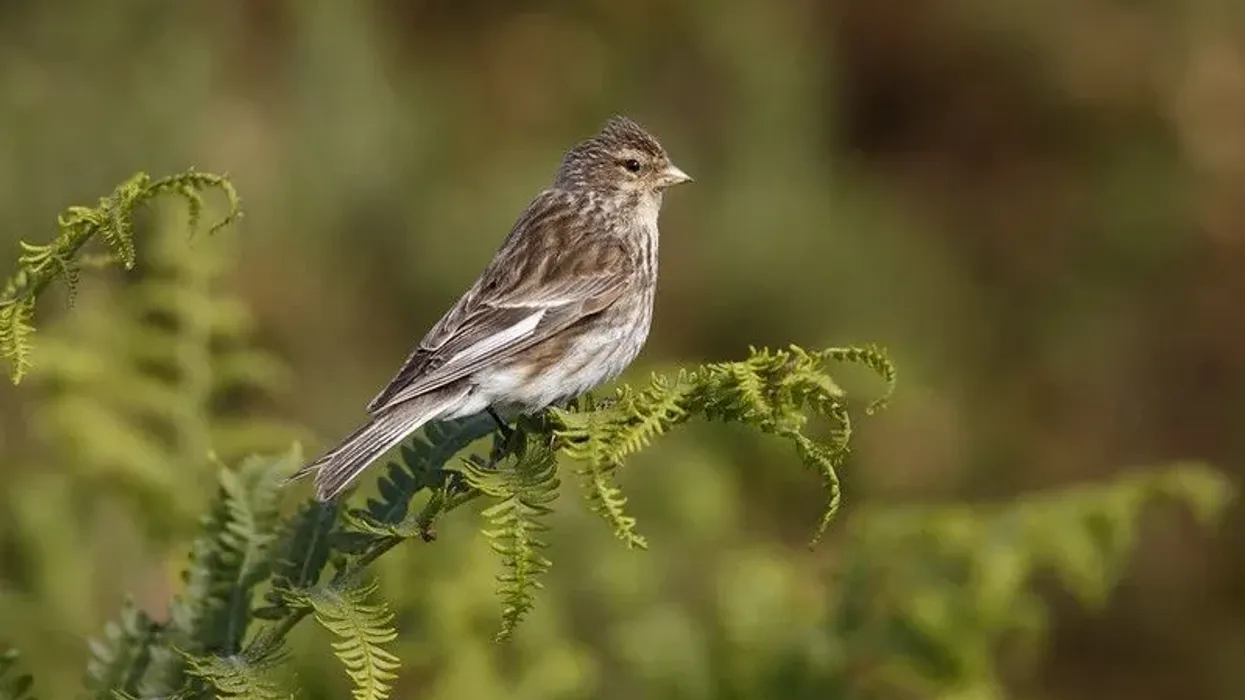The sedge wren belonging to the order Passeriformes is a very interesting bird to read about. These birds are famous for their songs and calls.
The males have many different songs, and each song is unique since each bird improvises its own song. The birds with these unique songs and calls can be found in North American and South American states in the world. They indulge in migration between these two continents.
This migration takes place because of the change in season. Migration takes place from the breeding range map to the winter range map.
The breeding range of these birds is known to include grasses, sedges, marshes, and other moist ground. It is in these breeding ground-worthy areas that the sedge wren builds their nests. The nests also see the hatching of young ones.
This article will tell you about more such behavior of the sedge wren. So keep on reading.
For more similar content, check out house wren facts and scarlet macaw facts.
Sedge Wren Interesting Facts
What type of animal is a sedge wren?
The sedge wren, Cistothorus platensis, is a type of bird.
What class of animal does a sedge wren belong to?
The sedge wren, Cistothorus platensis, belongs to the class Aves.
How many sedge wrens are there in the world?
Although the current population of the sedge wren remains unknown, as of 2014, the global population of the sedge wren (Cistothorus platensis) stood at a whopping 20 million. Their population is believed to be increasing by the day.
Where does a sedge wren live?
The sedge wrens have a natural habitat of grasslands, where there are grasses, sedges, and more. The sedge wren (Cistothorus platensis) of the order Passeriformes, can be found in the grasses of North America as well as South America.
The states in North America to which sedge wrens are native include central and southern parts of Canada, Manitoba, Saskatchewan, and the north-central region of the United States. North America is, however, the geographic range during the breeding season of the sedge wren (Cistothorus platensis).
Sedge wren breeding habitat also includes the Great Lakes, which is inclusive of Iowa, eastern Dakota, south Alberta, Indiana, Minnesota, and Ontario. The sedge wrens have a different geographic range during the winter season.
This range lies mostly in South America. These include northeast parts of Mexico, Veracruz, and eastern Texas.
However, these birds may also spend their winter months in North America, such as places on the map like the southeast United States, Florida, New Jersey, and the Gulf Coast. Similarly, sedge wrens can also be found in some parts of Mexico.
What is a sedge wren habitat?
Sedge wrens are a resident breed of dense and wet grassland habitats. These habitats include sedge meadows, as their name suggests.
Additionally, sedge wrens can be found on the banks of ponds, bogs, marshes, and coastal wetlands. Moist agricultural lands can also provide suitable habitats for sedge wrens. These birds prefer to stay near dense vegetation or grasslands like grasses, sedges, marshes, and shrubs, to open fields or grasslands that are flooded.
Who does sedge wren live with?
Sedge wrens are usually solitary birds who only pair up with the opposite sex during the breeding season.
How long does a sedge wren live?
The average sedge wren can live to be up to five years of age.
How do they reproduce?
Sedge wrens, of the order Passeriformes, attain sexual maturity at the age of one year. The males can be either monogamous or polygynous.
The month of May marks the onset of the breeding season, and it ends in September for these North American birds. For the first time they mate, these birds are known to migrate to the breeding range that lies in the most northern region.
However, they may move back to their southern range for subsequent reproduction later. The males are known to arrive at the breeding grounds a fortnight prior to the females. The males then build a number of nests for the female to choose from, which she then goes on to decorate.
Following that, mating occurs, and the female lays up to eight white eggs in the nest. The female birds lay one egg per day.
Interestingly, these birds start the process of incubation from the last egg. The incubation period or hatching of the young ones takes about 13-16 days for this breed.
What is their conservation status?
The International Union for Conservation of Nature (IUCN) Red List has marked these birds of the order Passeriformes as a species of Least Concern. The status of conservation or the status of their populations is defined as such because the populations are stable and on the rise.
As a result, there is no threat to their species populations as of now.
Sedge Wren Fun Facts
What do sedge wrens look like?

These are mostly North American birds. They are brown in color, with the underparts of their plumage being buff-colored.
They have a small, rounded body. The beaks of these birds are tiny and they have a wingspan of 4.7-5.5 in (12-14 cm). They are known to be migratory birds; however, these birds do not change their plumage according to the seasons.
How cute are they?
The sedge wren looks very cute. Its small, rounded, fluffy body gives it an adorable appearance.
How do they communicate?
This species of birds communicate through the senses of touch, sight, and sound, paired with the perception of chemical signals. The males are known to have up to 60 different songs. Each male improvises their own unique song.
These are sung on their arrival to the breeding range. Songs may be sung by the male so as to compete with another male or over territory.
However, these North American birds also sing in springtime while residing in their winter habitat. Observations say that these birds begin their song with three or four notes. Their songs are said to be a type of staccato chatter.
How big is a sedge wren?
These birds measure about 3.9-4.7 in (10-12 cm) in length. They are almost ten times bigger than a bee.
How fast can a sedge wren fly?
Although the speed at which these birds fly remains unknown, a wren is known to be an agile and rapid flier.
How much does a sedge wren weigh?
This species of the wren weighs approximately 0.3-0.4 oz (10 – 12 g).
What are their male and female names of the species?
The males are called cocks, while the females are called hens.
What would you call a baby sedge wren?
A baby sedge wren is called a chick.
What do they eat?
This species of wrens are carnivorous. The diet of this species of wrens is mostly dependent on invertebrates. They search for insects and spiders on the ground, especially near plants. However, they can also catch flying insects in the air for their food.
Are they dangerous?
No, these wrens are not a dangerous species. They are very small in stature and feed only on insects and spiders. They do not pose a danger to any human or other wrens or any other species of bird.
Would they make a good pet?
Wrens are not known to make good pets. Although they may be harmless, it is not advisable to keep them as pets. This cute little bird needs ample open space to fly around as it is a wild bird. Moreover, it is illegal in most places to be in possession of this bird.
Did you know...
Winter wrens have a very specific sound. The song of this bird is very cheerful and continues for a few seconds. On the other hand, the call of this bird sounds like a sparrow when it barks.
Natural predators of wrens include birds that are bigger than them, such as jays. Other animals that prey on wrens include rats, woodpeckers, raccoons, snakes, cats, possums, foxes, squirrels, and owls.
What's the difference between a house wren and a Carolina wren?
The main difference between a house wren and a Carolina wren lies in their appearance. The house wren has a smaller build than that of a Carolina wren.
Their plumage is also a darker shade of brown than the Carolina wren. One of the specialties of a Carolina wren is their white chest and the stripe-like eyebrows, which are missing in house wrens.
What are wrens known for?
The wren is known to be the shortest bird in the United Kingdom. Wrens are also known to have many calls.
These calls are given out by the bird multiple times a day. Another feature of this bird is that it can be a sign of good fortune. They are globally popular in the folklore of different cultures, such as the Irish as well as the Zulu culture.
Again, interestingly, the wren bird gets friendlier as the weather begins to get colder. Lastly, another amazing characteristic about this bird is that their calls can hit two notes simultaneously.
Here at Kidadl, we have carefully created lots of interesting family-friendly animal facts for everyone to discover! Learn more about some other birds including the gentoo penguin and the secretary bird.
You can even occupy yourself at home by coloring in one of our free printable sedge wren coloring pages.










